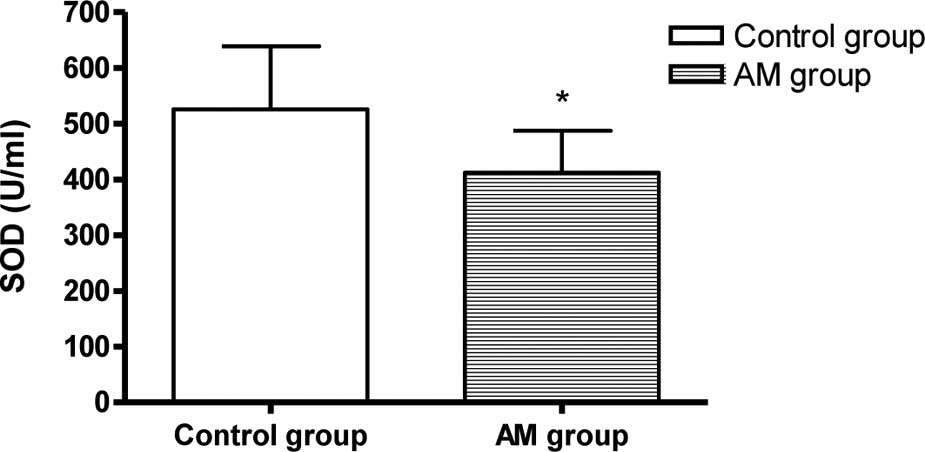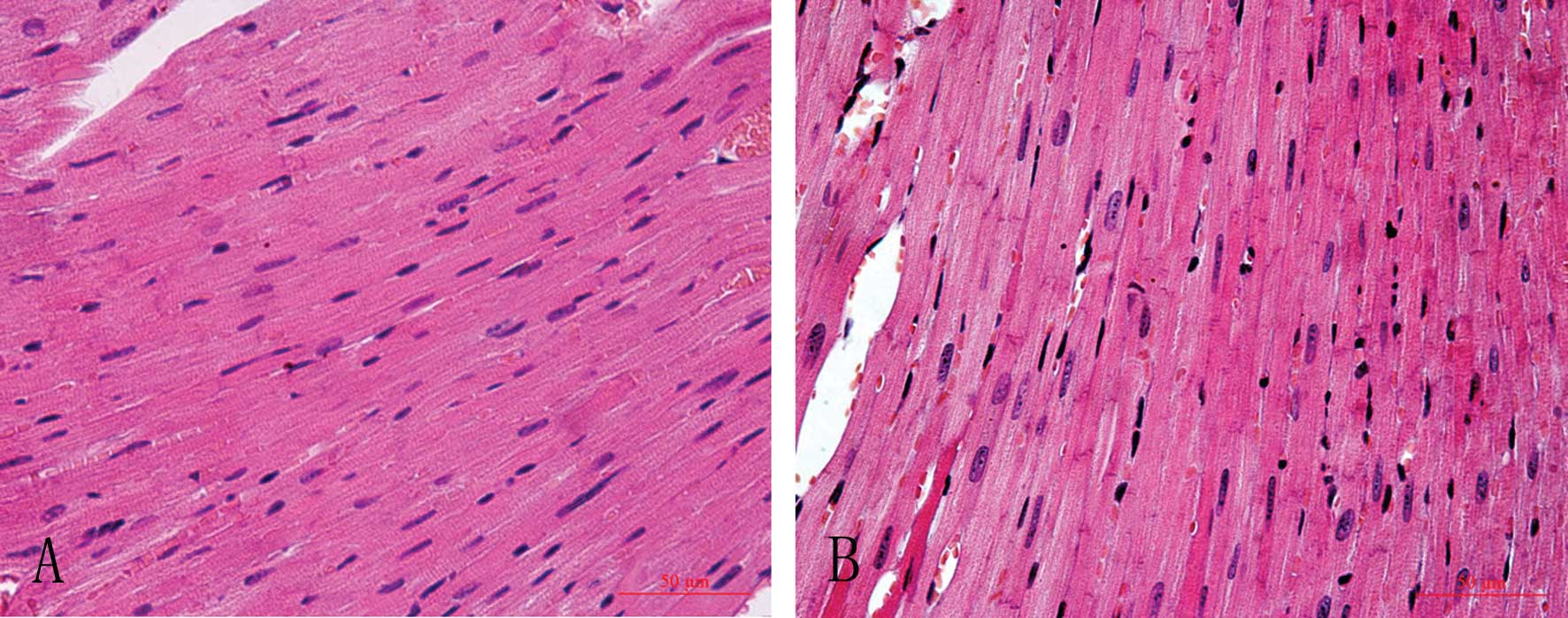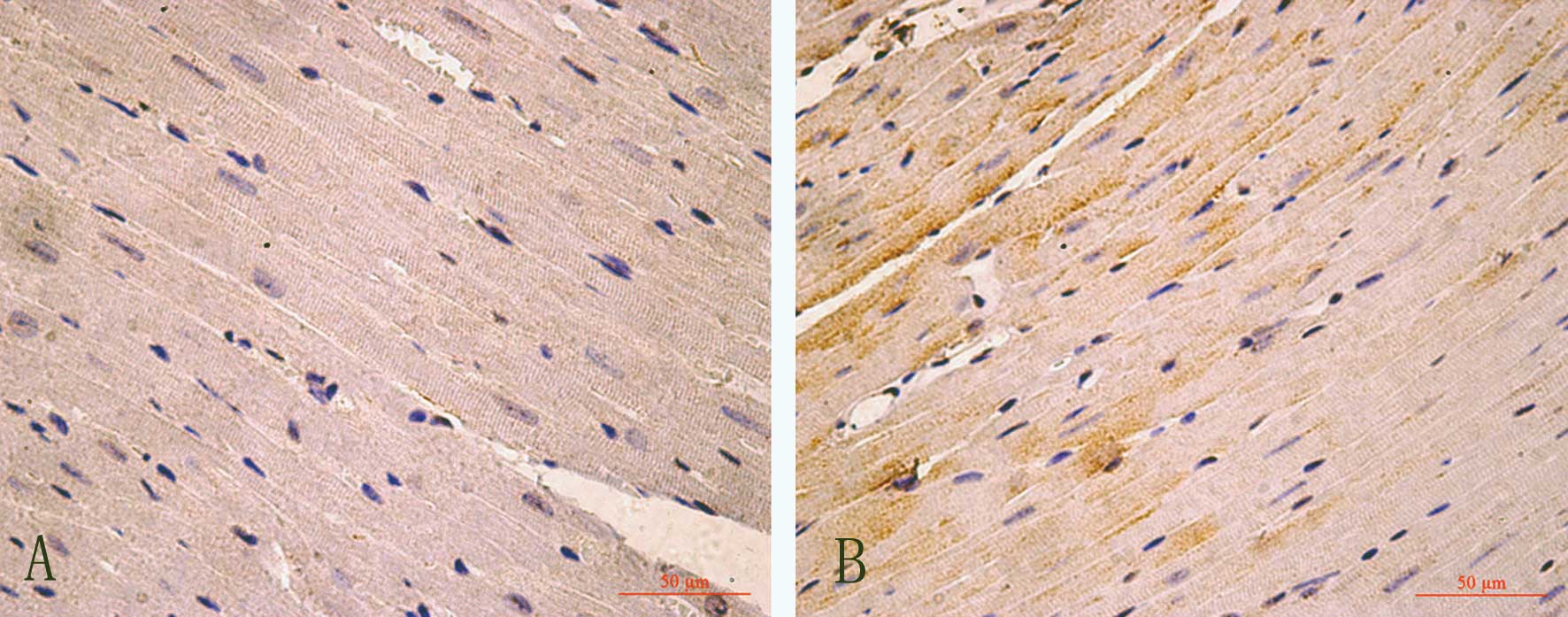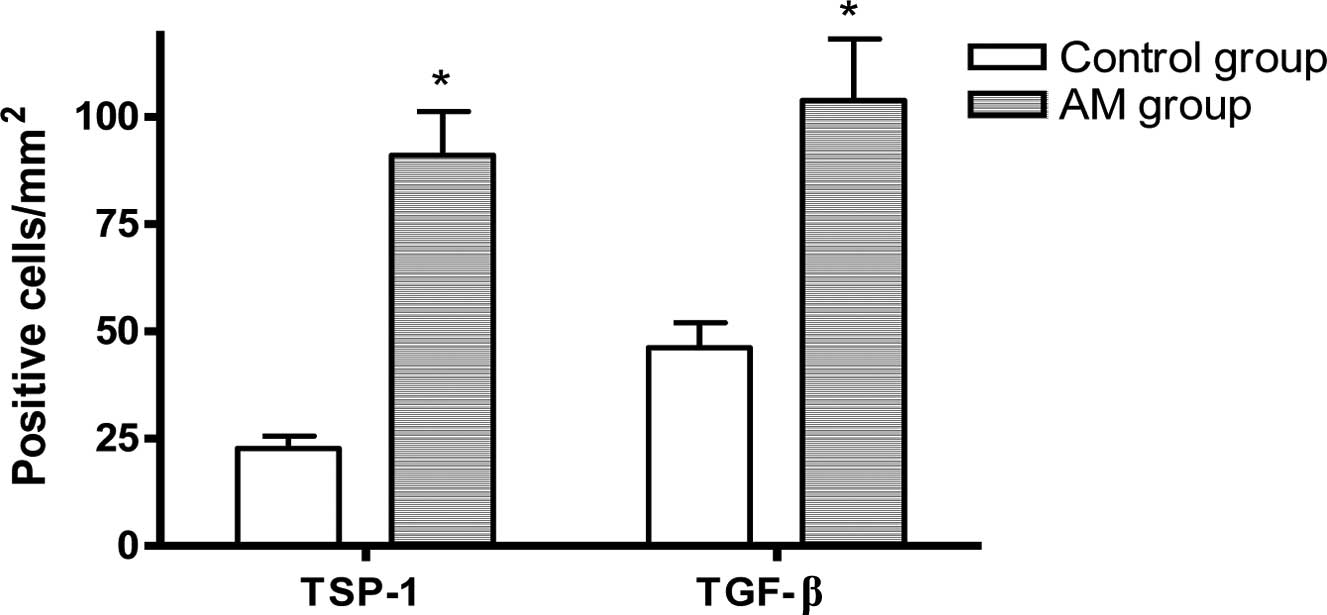Investigation of thrombospondin-1 and transforming growth factor-β expression in the heart of aging mice
- Authors:
- Huabo Cai
- Zhanggen Yuan
- Qing Fei
- Jiayao Zhao
-
View Affiliations
Affiliations: Department of ICU, Sir Run Run Shaw Hospital, School of Medicine, Zhejiang University, Hangzhou 310016, P.R. China, Department of Anatomy, School of Medicine, Zhejiang University City College, Hangzhou 310015, P.R. China
- Published online on: December 20, 2011 https://doi.org/10.3892/etm.2011.426
-
Pages:
433-436
Metrics:
Total
Views: 0 (Spandidos Publications: | PMC Statistics:
)
Metrics:
Total PDF Downloads: 0 (Spandidos Publications: | PMC Statistics:
)
This article is mentioned in:
Abstract
Elderly patients face the problems of morbidity and mortality due to age-mediated disabilities. The purpose of the present study was to investigate the expression of thrombospondin-1 (TSP-1) and transforming growth factor-β (TGF-β) in aging mice, and its probable mechanism in the pathological changes of aging myocardium. The aging model group (AM) comprised 30-month-old mice, while the control group comprised 2-month-old mice. The pathological changes were explored by H&E staining, and the contents of superoxide dismulase (SOD) and malondialdehyde (MDA) in the hearts were determined by xanthine oxidation or TBA colorimetry. TSP-1 and TGF-β expression in the left ventricular myocardium was also measured by immunohistochemistry. The results showed that the activities of SOD decreased and the MDA content increased markedly in the hearts of the AM group compared to the control group. H&E staining showed that the control group myocardial cells lined up in order with clear structure and stained equably, while the AM group myocardial cells lined up in disorder with an augmented cell body and the appearance of many granules and interstitial fibrosis. Compared to the control group, in the hearts of the AM group, TSP-1 and TGF-β protein expression in myocardial cells showed a significant increase (P<0.01). TSP-1 and TGF-β expression increased in the myocardium, which may be related to pathological changes of age-related heart diseases, such as hypertrophy, fibrosis of myocardial cells and microvessel dissepiment thickening.
View References
|
1.
|
A JahangirS SagarA TerzicAging and
cardioprotectionJ Appl
Physiol10321202128200710.1152/japplphysiol.00647.200717717116
|
|
2.
|
W ChenNG FrangogiannisThe role of
inflammatory and fibrogenic pathways in heart failure associated
with agingHeart Fail
Rev15415422201010.1007/s10741-010-9161-y20213186
|
|
3.
|
A BurkauskieneZ MackiewiczI
VirtanenAge-related changes in myocardial nerve and collagen
networks of the auricle of the right atriumActa
Cardiol61513518200610.2143/AC.61.5.201776517117750
|
|
4.
|
R KhanR SheppardFibrosis in heart disease:
understanding the role of transforming growth factor-beta in
cardiomyopathy, valvular disease and
arrhythmiaImmunology1181024200610.1111/j.1365-2567.2006.02336.x16630019
|
|
5.
|
A IshihataY KatanoRole of angiotensin II
and endothelin-1 receptors in aging-related functional changes in
rat cardiovascular systemAnn NY Acad
Sci1067173181200610.1196/annals.1354.02116803983
|
|
6.
|
M WangJ ZhangS WalkerInvolvement of NADPH
oxidase in age-associated cardiac remodelingJ Mol Cell
Cardiol48765772201010.1016/j.yjmcc.2010.01.00620079746
|
|
7.
|
HJ ZhuAW BurgessRegulation of transforming
growth factor-beta signalingMol Cell Biol Res
Commun4321330200110.1006/mcbr.2001.030111703090
|
|
8.
|
ML Iruela-ArispeRegulation of
thrombospondin1 by extracellular proteasesCurr Drug
Targets9863868200810.2174/13894500878590936518855620
|
|
9.
|
S Schultz-CherryS RibeiroL
GentryThrombospondin binds and activates the small and large forms
of latent transforming growth factor-beta in a chemically defined
systemJ Biol Chem26926775267821994
|
|
10.
|
DH KangS AndersonYG KimImpaired
angiogenesis in the aging kidney: vascular endothelial growth
factor and thrombospondin-1 in renal diseaseAm J Kidney
Dis37601611200110.1053/ajkd.2001.2208711228186
|
|
11.
|
DD BonnemaCS WebbWR PenningtonEffects of
age on plasma matrix metalloproteinases (MMPs) and tissue inhibitor
of metalloproteinases (TIMPs)J Card
Fail13530540200710.1016/j.cardfail.2007.04.01017826643
|
|
12.
|
DR EdwardsKJ LecoPP BeaudryDifferential
effects of transforming growth factor-beta 1 on the expression of
matrix metalloproteinases and tissue inhibitors of
metalloproteinases in young and old human fibroblastsExp
Gerontol131207223199610.1016/0531-5565(95)02010-18706790
|
|
13.
|
ML BeggsR NagarajanJM
Taylor-JonesAlterations in the TGF beta signaling pathway in
myogenic progenitors with ageAging
Cell3353361200410.1111/j.1474-9728.2004.00135.x15569352
|
|
14.
|
GD YoungJE Murphy-UllrichThe
tryptophan-rich motifs of the thrombospondin type 1 repeats bind
VLAL motifs in the latent transforming growth factor-beta complexJ
Biol Chem2794763347642200410.1074/jbc.M40491820015342643
|
|
15.
|
XM ZhangF ShenZY XvExpression changes of
thrombospondin-1 and neuropeptide Y in myocardium of STZ-induced
ratsInt J
Cardiol105192197200510.1016/j.ijcard.2004.12.06516243112
|
|
16.
|
XM ZhangPH ShiSH CaoExpression changes of
transforming growth factor-beta1 and thrombospondin-1 in cavernous
tissues of diabetic ratsUrol
Int84221225201010.1159/00027760220215829
|
|
17.
|
W CuiHB JinZW LiMechanism of the
transforming growth factor-beta induction of fibronectin expression
in hepatic stem-like cellsBraz J Med Biol
Res433642201010.1590/S0100-879X200900750001719936542
|
|
18.
|
M RenB WangJ ZhangSmad2 and Smad3 as
mediators of the response of adventitialfibroblasts induced by
transforming growth factor β1Mol Med Rep4561567201121468608
|














